1. Spanish Civil War: Causes (ATL)

After over a century of social, economic and political division, the Spanish Civil War broke out in July 1936 when an attempted military coup failed and the country descended into internal conflict
Below are ATL which help explain the country's divisions and how they led to war.
Guiding questions
What were the long term causes of the Spanish Civil War?
What were the characteristics of different political ideologies popular in Spain prior to the civil war?
What was the impact of the dictatorship of Primo de Rivera [1923 - 1930]?
How was the Second Republic established in Spain?
How did the Left Republic cause more division in Spain after 1931?
Why did the Right Republic lead to more tension and division in Spain after 1933?
How did the election of a Popular Front government in February lead to a civil war in Spain in July 1936?
1. What were the long term causes of the Spanish Civil War?
.png)
Map showing the different regions of Spain
The first tasks are designed to give students idea of the tensions that existed within Spanish society before the 1930s.
Task One
ATL: Thinking skills
In pairs read through the following events in Spain between 1820 and 1931 and answer the questions that follow:
\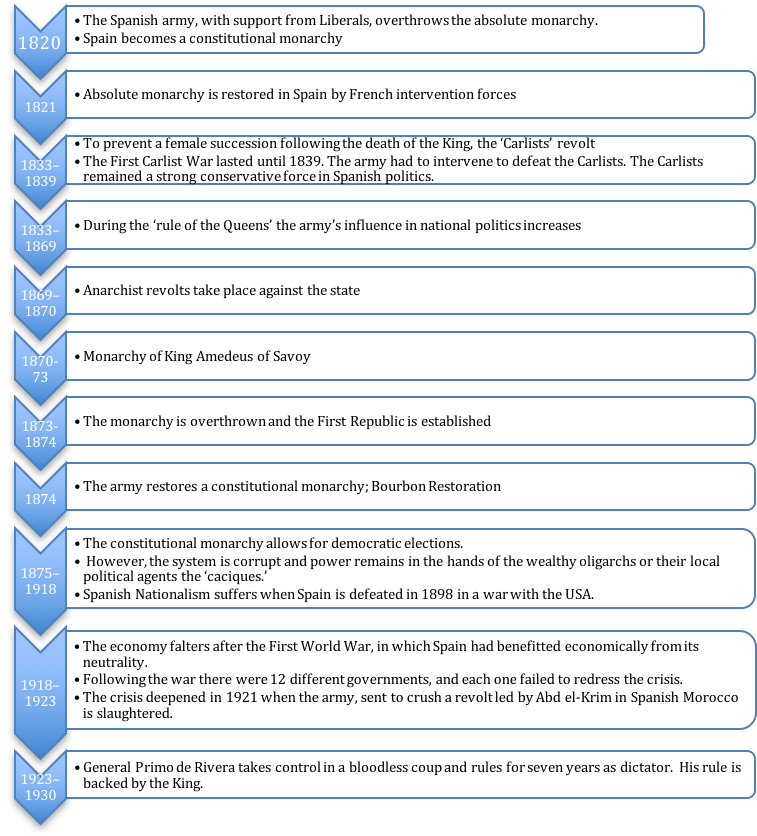
- What political tensions and divisions can you identify from the timeline of events?
- When had there been intervention in politics by a] the Spanish military b] a foreign power?
- What does this timeline of events suggest about Spain's political and social stability up to 1930?
- Paul Preston suggests that in Spain there was an acceptance that political problems could be solved through violence rather than debate. Using the events on this timeline, what evidence is there to support this viewpoint?
Task Two
ATL: Thinking skills
Read the information on the attached handout (or click on the eye below) and complete a mind map to show the issues causing tension in the years before 1930

![]() Long-term causes of Spanish Civil War; mind map exercise
Long-term causes of Spanish Civil War; mind map exercise
Political issues:
As you have seen from the timeline, from 1871, Spain had been a constitutional monarchy. The king was head of state, and he appointed a prime minister who should have the backing of an elected majority in the parliament, or Cortes. However, real power remained in the hands of the wealthy oligarchs, and although elected by a limited section of the male population, political control merely shifted between different powerful cliques. There were two main parties, the Conservatives and the Liberals, but the difference between the parties was limited. Elections were usually rigged or decided by corruption. Spain had no mass democratic political parties.
In addition, you will also have seen in the timeline activity that the army had historically intervened in politics in Spain. The army retained a powerful position due to its role in Spain’s imperial past and saw itself as the protector of the nation. This meant it had the right to intervene in politics if a crisis developed. However, the army was unpopular with the Spanish people. It had a reputation for great brutality, it was hugely expensive, and had to be paid for via heavy taxation. It was in desperate need of reform, as the army was too large for post-imperial Spain. The upper and middle classes defended the scale of the military, which had far too many officers, as the upper classes dominated the officer corps. Politically, the army leaders were conservative, but there were elements, for example, the ‘Africanistas’, who were experienced in the wars in Morocco, who were deeply nationalistic. The credibility of the army had also been undermined when it lost a war with America in 1898 and struggled to keep control of Morocco between 1906 and 1926.
Socio-political tensions:
The Catholic Church was wealthy and powerful in Spain. Its power and political influence had led to disputes between church and state throughout the 19th century. The state had secured the backing of the Catholic church by guaranteeing its role in education and in elements of the economy. The church had used its wealth and position to gain considerable political and social influence. The church promoted social, political, and economic conservatism and it was opposed to liberal and modernizing forces. The aristocracy and upper classes had close ties to the church as they made up the vast majority of senior clergy, and provided much of the church’s funding. Although the church was more popular in the rural areas, in many urban areas there were protests against the church which was resented for its association with the aristocracy and wealthy elites. Some of the educated middle class were also anti-clerical, promoted liberalism and wanted to limit the church’s power, specifically its control over education.
Regionalism (see map above):
A significant underlying cause of political tension was regionalism. The centralist state opposed the demands for autonomy from Catalonia and the Basque regions, which wanted decentralization and independence. The Catalans and the Basques had separate languages and cultures, independent churches and by the early 20th century they had industrialized their economies. Therefore, there were also economic strains between the regions and the central government. Most of Spain’s key industries were concentrated in the Catalan and Basque regions, including textiles, iron, and coal industries in Catalonia, and shipbuilding in the Basque country. Political protests and strikes were met with brutal state suppression. Between 1918 and 1921, 1,000 people were killed in protests in Barcelona alone.
Economic problems:
Spain was primarily an agricultural economy, and agricultural labour was the main source of employment. However, it was highly inefficient and most agricultural work was ‘seasonal’. This meant that rural workers had to migrate to find work and the majority lived in gruelling poverty. In the south and centre of Spain, there were vast landed estates, the latifundia, owned by the ‘Grandees’. This elite group also dominated the political system. In the north of the country, peasants owned small plots of land, which were often only adequate for a subsistence living standard. The stark divisions between the rich and poor in the countryside led to frequent rioting and disturbances. The state’s Civil Guard was used to crush disorder.
Some of the rural poor turned from church organizations, such as the Catholic Agrarian Federation, to radical political groups such as the anarchists. The anarchists demanded the redistribution of land.
Furthermore, Spain needed economic modernization. Although some areas of the north had industrialized there had been a lack of reform and investment. Workers in the urbanized cities, like the rural poor, had a low standard of living due to low wages, long hours, unregulated working conditions, poor housing, and limited or no welfare provision. The environment in the industrialized areas led to the growth of trade unionism. However, the unions’ main tool to gain concessions from employers – strike action – was blunted by the migration of unemployed seasonal workers from the countryside. The unions were also divided between anarchist and socialist groups. The urban workers’ political parties had no political power. Thus, with no legal means of affecting change, elements of the working classes looked to violent upheaval and revolution to improve their situation.
These systemic economic issues were given some respite by Spain’s neutrality during the First World War. Indeed, between 1914 and 1918 there a period of economic boom as exports increased. However, there were also shortages and inflation that led to working-class living standards declining further. The government failed to capitalize on the war years, and in the early 1920s there were major economic problems. Working class militancy had grown and in industrial cities in Catalonia there were violent confrontations.
Political divisions:
There was a Liberal movement in Spain, mainly supported by the educated middle classes. It had not achieved much in opposing the conservative forces in Spain throughout the 19th century, however, it remained a political force in Spain in the 1920s. In the late 19th century the Partido Socialista Obrero Español (PSOE, Spanish Socialist Party) had developed in urban areas in the late 19th century, but had had limited impact. However, its trade union, the UGT was active. The more moderate Socialists were led by Indalecio Prieto, and the more radical group were led by Largo Caballero. There was also a small Spanish Communist party that had been founded after the Bolshevik revolution in Russia in 1917.
In addition to the socialists, as you have already seen, the anarchists were a major political group in Spain. The anarchists were popular in the countryside due to their demand for the redistribution of land and they also had established trade unions in some Spanish cities. The anarchists trade union was active in organizing strikes and protests. A more extreme anarchist faction, called the Federación Anarquista Ibérica (FAI, Spanish Anarchist Federation), carried out bombings and assassinations. The anarchists would not engage in any democratic processes and called for revolution.
2. What were the characteristics of different political ideologies popular in Spain prior to the civil war?
It is key for all aspects of the course that students have a good grasp of different ideologies and this activity is designed to reinforce their understanding in this area.
Task One
ATL: Thinking and Communication skills
Read through the brief definitions of each ideology below (click on the eye) or on the worksheet. Get into groups of five.
You will play the ‘heads up’ game with ideologies. Make sticky labels of the following: Liberalism; Nationalism; Anarchism; Socialism; Communism.
Each student places a sticky label either on their forehead or on their back. Students then have to ask for ‘descriptors’ of their ideology from their group. When each student has correctly identified their ideology, as a group discuss how these differing beliefs could cause tension within a society.
Liberalism
- Liberals emphasize the freedom of the individual
- Minimal interference by the state in the economy
- Promote the ideas of free trade and co-operation
- Civil liberties
- Universal suffrage
- Parliamentary constitutional government
- An independent judiciary
- Diplomacy rather than force in foreign relations
Nationalism
- Patriotism for a country, its geography, its people, its culture, and institutions
- Sometimes elements of xenophobia or fear / dislike of other countries / foreigners
- Humans are born into a national identity
- Each nation has the right to a homeland, territory, and sovereignty
- The state has rights over the individual
Anarchism
- Political power gives economic control and this explains the subjugation of the working classes
- Promotes a society without authority, rulers and rules. Society can only be fair and equal when humans act according to the dictates of their own consciences
- Society should be formed of associations of independent workers, with factories and utilities run by these associations
- There would only be contracts of mutual interest and a process of arbitration rather than courts
- Radical anarchists: argue for violent revolution as the powerful will never give up their position, so violence is necessary to destroy the oppressive system and privileges
- Non-revolutionary anarchists: power can be devolved from the central government to local governments. Over time devolution will secure the destruction of the state and the creation of self-governing communities
Socialism
- A more equal socio-economic system
- The government controls key industries and agricultural interests and taxes the rich to finance a better standard of living for all
- Government provides for more support for the poor including housing, healthcare, education and unemployment benefits
- International co-operation and solidarity
The difference between socialists and anarchists is the definition of what was the root cause of problems in society:
- Socialists – inequalities of wealth inevitably lead to inequalities of power
- Anarchists – inequalities of power lead inevitably to inequalities of wealth
Communism
- All human actions and institutions are economically determined
- Class struggle is the key causal factor for historical change
- Capitalism will be overthrown by communism
- No ownership of property – all is ‘commonly’ held by the community
- No state
- ‘Each according to his ability, each according to his need’
- Communists claim socialism is the stage after capitalism has been overthrown in the communist explanation of historical change
3. What was the impact of the dictatorship of Primo de Rivera [1923 - 1930]?
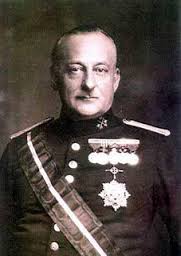
After the defeat of the Spanish army at Anual in Morocco a parliamentary inquiry was launched which potentially would have exposed significant failings by the government and the military. To avoid this, and to prevent a major political crisis, General Primo de Rivera established a temporary military dictatorship. De Rivera retained the monarchy, and received the backing of King Alfonso. The dictatorship was formally ended in 1925, but de Rivera remained as prime minister of a military government.
Task One
ATL – Thinking skills
In pairs discuss the successes and failures of Primo de Rivera’s regime. (click on eye to see these or print out handout) How far did he address the underlying issues and divisions you considered in your mind map? To what extent did Primo de Rivera create new problems for Spain?
Successes
- De Rivera ended the conflict in Morocco with the assistance of the French in 1925
- Set up a system of arbitration to end the conflict between industrial workers and employers that gained him some support from the socialists.
- Gave limited government subsidies to improve housing and health care of working classes
- Oversaw a sustained period of economic growth due to large scale investment in infrastructure projects such as roads, dams and irrigation
- Facilitated a period of political stability
Failures
- Social justice reform of fiscal system was defeated by banking sector. De Rivera had wanted to tax capital as well as wages
- Economic growth based on world trade boom between 1923 and 1929, economy enters period of crisis after Wall Street Crash in 1929 and ensuing global depression
- Great Depression impacted Latin America badly and this damaged trade with Spain’s key partners
- Government borrowed heavily to finance infrastructure projects
- De Rivera overvalued the Peseta before being forced to accept a significant devaluation
- The socialists withdrew support from the government as workers living standards fell
- Censorship and promotion of the influence of the church in higher education alienated the liberals and intellectuals
- Opposed regional autonomy and reduced Catalonia’s independence by banning the use of Catalan in religious services.
- Only introduced very limited land reform – opposed extensive interference in land ownership in the countryside
- Nationalists were disappointed by his failure to extend Spain’s north African territories and by his failure to gain Spain a permanent seat on the Council of the League of Nations
- The army was hostile to the disbandment of the Artillery corps
4. How was the Second Republic established in Spain?
Primo de Rivera resigned in January, 1930 after failing to gain backing from his generals. King Alfonso XIII then appointed another general to replace de Rivera. This was a mistake, as his choice was the elderly General Berenguer who inflamed political opposition by initially promising a general election and then postponing it for a year. The monarchy, which had been damaged by the demise of de Rivera’s regime, which it had backed, was now further undermined by the indecisiveness of Berenguer. Republican opposition strengthened; had the king had restored the constitution in 1930 the monarchy may have survived. In August representatives of the Republican organizations signed the Pact of San Sebastián, and after municipal elections had shown support for the San Sebastián pact’s coalition of parties (Republicans, Liberals, Socialists, and Catalans), the king went into voluntary exile. The army did not intervene and a relatively peaceful revolution transpired. The Second Spanish Republic was established in April 1931.
Task One
ATL: Thinking skills
The historian Paul Preston argued that: ‘... in 1931 when the Second Republic was established, no one, except a tiny minority on the lunatic fringe on the extreme right or left, believed that Spain’s problems could be solved only by war.’
In pairs discuss Preston’s point, and the extent to which you agree that the long term divisions in Spanish society did not make a civil war inevitable after 1931.
5. How did the Left Republic cause more division in Spain after 1931?
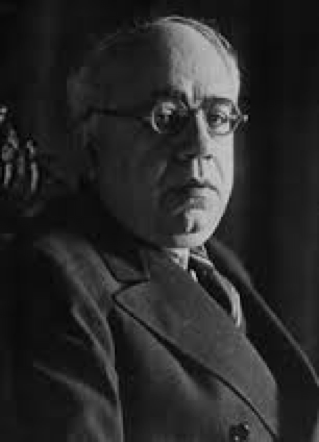
The Left Republic April 1931 – November 1933
In the elections that followed from the King’s exile, the centre-left won the majority of seats. The new government drew up a new constitution which described Spain as a ‘democratic republic of workers of all classes’. The constitution established:
- the Cortes would be elected every four years
- there would be universal suffrage for both men and women
- there would be a president as head of state,
- there would be freedom of worship for all religions.
The Left Republic implemented a program of reform under the leadership of Manual Azana.
Task One
ATL: Thinking and social skills
Get into groups of four. Discuss the two years of reform under Azana’s government. (click on eye to see these or print off worksheet) Which groups in Spanish society would support these reforms? Which groups would oppose the reforms? Make sure you explain why different groups in society would respond differently to the reforms.
Economic reform
- Arbitration committees were set up in the countryside to resolve disputes between landowners and laborers.
- Landowners were not permitted to hire migrant workers if local hires were available.
- 1932 Agrarian Reform gave power to the state to confiscate and redistribute land from the Latifundias and the church to landless laborers.
Regional autonomy
- Autonomy was given to Catalonia in 1932 and its new regional government was given wide ranging powers.
Social reform
- Religious freedom was enshrined in the new constitution. Civil marriages were introduced and divorce legalized. Church control of education was ended in the Associations Law which banned priests and nuns from teaching. As well as secularizing education, the state nationalized church property.
- The state invested heavily in education. It trained thousands of new teachers and built more than 7,000 new schools.
Military reform
- From 1931, officers were offered early retirement on full pay to reduce the size of the huge Spanish standing army. Although around 40% of officers ultimately accepted the proposal, the army was appalled that the government had suggested that retirement would be imposed if there were insufficient volunteers.
- Military promotions were cancelled.
- Some military academies were closed down.
Task Two
ATL: Thinking skills
In pairs discuss the information below which highlights the problems with these reforms. Explain to your partner why the reforms of the Azana government led to more division in Spain.
Economic issues
- Great Depression meant government had insufficient funds to finance reforms.
- Land reforms only benefitted 7,000 families as government could not afford compensation to landowners.
- Violence increased in the countryside. The anarchists viewed the land reforms as far too limited and a failure. In Casas Viejas the assault guard killed 25 anarchists.
- The removal of church run schools meant the government had to try to fund the building of new schools and the training and payment of teachers.
- The military reform did not save the government money as retired officers retained full pay
Political issues
- Catalan autonomy undermined the unity of the state and was opposed by conservatives
- Right wing elements of the army opposed regional autonomy
- The CEDA, led by Gil Robles, was an authoritarian right wing party set up in February 1933. It had a manifesto that promoted and protected the church, opposed the republic, and supported the property owners and conservative peasantry.
- The royalist Carlist movement gained new support for its aim to restore the monarchy under the claim of Don Carlos.
- The socialists were disillusioned by what they saw as very limited reforms under Azana.
Military issues
- Government inflamed opposition within the military as its threatened compulsory retirement if there was a lack of volunteers
- The military reforms had far reaching consequences as the officers that refused early retirement tended to be more political and highly nationalist and opposed to the Left Republics reforms
- A military coup led by General Sanjurjo failed in August 1932.
Social issues
- Strong opposition from the church as its interests were threatened
- Government failed to manage the expectations of the working classes for example, better health care
6. Why did the Right Republic lead to more tension and division in Spain after 1933?
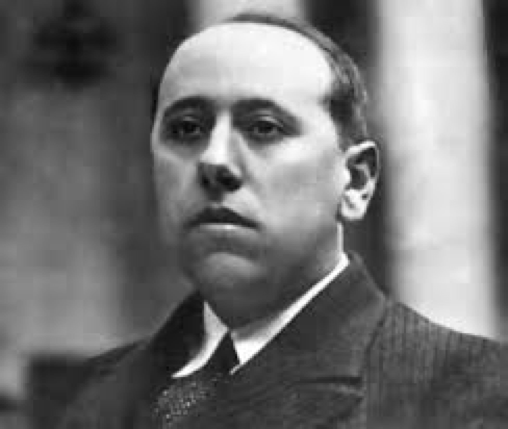
Starter activity
In pairs read the following extract from the closing speech of Gil Robles at CEDA’s founding congress in Madrid in February 1933:
‘When the social order is threatened, Catholics should unite to defend it and safeguard the principles of Christian civilization ... We will go united into the struggle, no matter what it costs ... We are faced with a social revolution. In the political panorama of Europe, I can see only the formation of Marxist and anti-Marxist groups. This is what is happening in Germany and in Spain also. This is the great battle which we must fight this year.’
Discuss the groups Robles in attempting to appeal to in this speech, and why it draws parallels with events more broadly in Europe in this period.
As Azana lost the support of the socialists who accused the government of producing a too limited program of reforms, other right republicans and Radicals also attacked the prime minister. As the coalition on the centre-left fractured apart Azana resigned. This triggered a general election which was won by a coalition of the right.
The Right Republic’s main program was to reverse the reforms of the Left Republic:
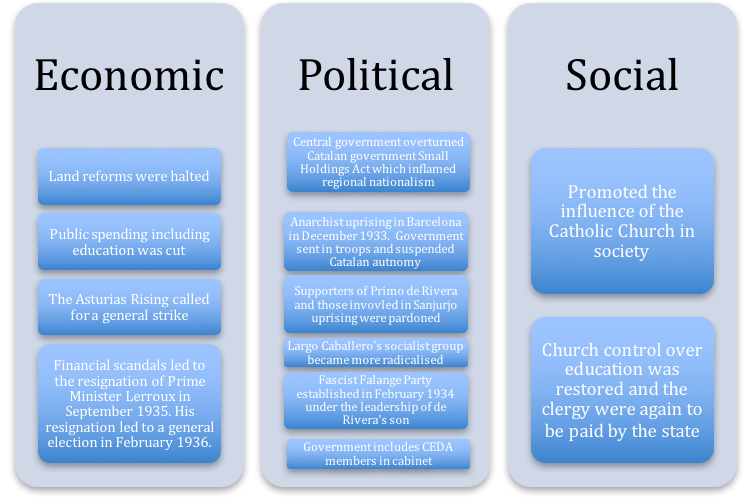
Task One
ATL: Thinking skills
As you might be able to assess from the table above, the Right Republic’s reforms further polarized Spanish society. The political situation was increasingly complex.
In small groups investigate the different political parties and factions that developed in Spain during the Second Republic. Discuss your findings with your group and the extent to which this political diversity suggested that Spain was irreconcilably divided and moving towards a civil war.
Task Two
ATL: Thinking skills
At this point, it could be good to review all of the factors that you have looked at so far in causing the Spanish Civil War.
Go to Youtube and find: Dictator’s playbook – Franco which has key historians Paul Preston and Helen Graham discussing the Spanish Civil War. Watch from 12:54-23.40 and answer the following questions (click on the eye)
- What had convulsed Europe transforming societies across the continent by 1918?
- The Spanish population was largely rural, and which religion was a powerful force?
- Historian Paul Preston suggests that the gap between rich and poor had led to a divide between those that had wealth and those that wanted to change things. What was the issue for those that wanted change?
- What ideology, inspired by Russia, was gaining popularity in Spain?
- What ideology did the right-wing look to?
- Why, according to Preston, were some Spaniards hostile to the Roman Catholic Church?
- Why, according to Graham, were conservatives against attacks on the church?
- By April 1931, what had happened to support for the monarchy?
- Was the new government elected after the King’s stepped down, left or right wing?
- What did the new constitution guarantee?
- Who could vote in the Spanish republic?
- What was Franco’s idea of ‘authentic Spain’?
- When did a coalition of conservatives win the election?
- What promotion did this government give Franco?
- A year later, in 1934, socialists and anarchists staged a major strike in which coal rich region?
- Which troops under Franco’s command were sent to break the strike and restore order?
- Franco’s forces rounded up and gunned down how many?
- Franco used terror tactics and military force, how were the navy and air force used?
- How many prisoners were transported to colonial territories outside Spain?
- The political backlash brought about a coalition of the left, what was this called?
- When the Popular Front won the February, 1936 election, what actions were taken to prevent a military coup?
- What was perpetrated by left-wing extremists that enraged conservatives and right-wingers like Franco?
- Who’s assassination convinced Franco to join the military coup plot?
- Where, in civilian clothes, did Franco fly to on 18th July 1936?
- What was Franco’s ‘mission’?
7. How did the election of a Popular Front government in February lead to a civil war in Spain in July 1936?
Task One
ATL: Thinking and self-management skills
1. Read the account of the Popular Front government below or from your text book. (click on the eye)
2. Create a timeline from 1923 to 1936. Mark on the timeline the different governments and indicate the key reforms/issues of each government.
2. Which individuals were key for driving events in these years?
Create brief biographies of each individual on an A4 sheet with a photograph and a summary of the impact that they had in creating a crisis situation. Print these off and display in your class.
In the elections that followed the collapse of the Right Republic imbued with financial scandals, a Popular Front government was brought to power. The Popular Front was a coalition of anti-Fascist groups which included socialists and communists as well as center left parties and liberals. Azana returned to lead the government, initially as the prime minister and then as president, and he wanted to restore the reforms of the 1931–1933 regime.
However, the Popular Front government faced political problems from the start as Caballero’s radical socialists refused to join it and the right wing groups would not accept the restoration of reforms. In addition, the Anarchists encouraged peasants to seize land and this led to an increase in violence in the countryside. Azaña’s response was to legitimize the land seizures. Indeed, there was widespread violence perpetrated by the Anarchists militias which not only sanctioned bomb attacks and assassinations but who also engaged in street fights with and the CEDA and the Falange.
Economic problems continued, and in May, the CNT called a general strike across Spain’s industrialized cities. In the countryside, thousands of peasants began to occupy the great estates.
The violence, unrest, land seizures and strikes led the right wing groups to argue that Spain was in the early throes of a soviet style communist revolution.
In fact, military officers began planning a coup to seize power when the victory of the Popular Front in the elections was announced. Gil Robles also offered support and funding for a coup. An extreme nationalist group of junior officers joined with senior Africanista officers, including General Mola. The conspirators used the murder of a popular right-wing leader, José Calvo Sotelo, on 13 July 1936 as the catalyst.
The historian Francisco J Romero Salvadó suggests that: ‘Calvo Sotelo’s death ... persuaded dithering officers to participate in the plans for a coup that had been underway since the right had lost the political argument in a democratic ballot.’
Although Azaña had known that there were plans for a coup he was unable to prevent it. The officers had the support of the fascist Falange, the CEDA, and the monarchist ‘Carlist’ and ‘Alfonsist’ groups. On 17 July, the revolt began in Morocco and quickly spread to the mainland. The conspirators were successful in taking Cantabria and parts of Andalusia. However, the coup failed to take control of the main industrial areas nor the capital, Madrid. In addition, half of the Spanish army remained loyal to the Republic.
It was the failure of the coup, and the resistance of the Republic that turned the revolt of the officers into a civil war.
Task Two
ATL: Thinking skills
Read the source below in pairs and discuss how far you agree with Lannon’s assessment of the causes of the Spanish Civil War.
Extract from the academic book by historian Frances Lannon, 2002. The Spanish Civil War. Osprey, p.7.
The Spanish Civil War ... was a class war, and a culture war. Competing visions of Spanish identity were superimposed on a bitter struggle over material resources, as the defenders of property and tradition took up arms against a Republican government committed to social reform, devolution and secularization.

 IB Docs (2) Team
IB Docs (2) Team
